Book
Book
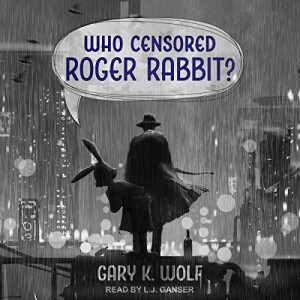


Tuesday Mar 19, 2024
Tuesday Mar 19, 2024
Welcome to an all-new episode of the Literary License Podcast, where we bridge the gap between literature and its screen adaptations. Join us and our special guest, Leandro Gazi, as we unwrap our life experiences, delve into the intriguing world of 'Who Censored Roger Rabbit?' novel by Gary Wolf and its iconic movie adaptation 'Who Framed Roger Rabbit'.
We ecstatically dig deeper into the book’s thought-provoking narrative and how it subtly interlaces political innuendos. We uncover the creative vision of Leandro and how the distinctive charm of the movie adaptation adds to the Roger Rabbit legacy. Discover the plot twists and suspenseful allegory, leading us through a maze of mysteries and unanticipated denouements in the narrative.
We then traverse the exquisite realm of 'Who Framed Roger Rabbit', directed by the genius Robert Zemeckis. Released in 1988, it was a spectacular blend of live-action and animation, earning global recognition for its visual effects, performances, and humor. We feature a detailed comparison between the original book and the film adaptation, leading to an insightful view of the whole creation process.
Our discussion takes you back to the unforgettable scenes, such as the magnetic performance of Jessica Rabbit and Eddie Valiant's thrilling adventures in Toontown. We reveal the magic behind how this film jump-started the Disney Renaissance, setting a benchmark for animation.
Lastly, ride with us on a captivating journey into the world of animation film-making. We present a critique on the process of integrating classical characters into unrelated plots, the resulting repetitiveness, and how these techniques trick the viewer's eye to create visual masterpieces. Join us as we navigate the interesting narrative loops and special effects that mesmerize audiences through decades.
Opening Credits– Epidemic Sound – Copyright . All rights reserved
Closing Credits: Why Don’t You Do Right by Benny Goodman and Peggy Lee. Copyright 1942 Columbia Records
Section Breaks: Soundtrack Selections from the Original Motion Soundtrack Who Framed Roger Rabbit. Music by Alan Silverstri. Copyright 1988 Disney Records.
Original Music copyrighted 2020 Dan Hughes Music and the Literary License Podcast.
All rights reserved. Used by Kind Permission.
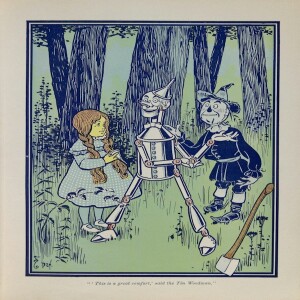


Sunday Feb 04, 2024
Sunday Feb 04, 2024
Welcome to a highly engaging episode of the Literary License Podcast's Book to Screen series. In this episode, dive into the timeless world of 'The Wizard of Oz' by L. Frank Baum. Join hosts Keith Chawgo, Leandro Ghezzi and Vicky Rae as they delve into the mesmerizing world of Oz, discussing its origins, Broadway adaptation, and its iconic film version that made Judy Garland unforgettable.
Immerse in the journey of Dorothy Gale, Toto, and the magical Land of Oz. Discover or even re-discover why this classic American fairy tale remains close to our hearts as we go through the fascinating characters, landscapes, and intricate quests of the story. The episode also features a deep exploration of the symbolic elements and hidden messages within the story, shedding light on some intriguing theories and metaphors.
The podcast also eloquently touches upon the complexities of the digital existence in the era of social media. The conversation raises questions about our privacy and highlights the consequential aspects of our digital interactions. Important issues like online bullying and the psychological impact of social media are also addressed, stressing the need to discern the 'false reality' it presents.
Furthermore, revealing a refreshing perspective on pop culture, we share noteworthy insights relating to manipulation in media and the portrayal of 'happy' life in advertising. Then, we decant 'The Wizard of Oz' in contrast to its widely popular cinematic version, also exploring the narrative techniques in children's fantasy novels.
The conversation wraps up with a spirited critique of 'The Wizard of Oz' film, also touching upon its African American adaptation - 'The Wiz'. Offering significant insights into the casting and production, this thrilling episode leaves no stone unturned. So whether you're a fan of the original books or the picked adaptations, this episode promises a fresh and thorough perspective on the world of Oz.
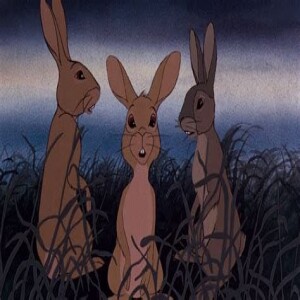


Sunday Jan 07, 2024
Sunday Jan 07, 2024
Watership Down is an adventure novel by English author Richard Adams, published by Rex Collings Ltd of London in 1972. Set in Hampshire in southern England, the story features a small group of rabbits. Although they live in their natural wild environment, with burrows, they are anthropomorphised, possessing their own culture, language, proverbs, poetry, and mythology. Evoking epic themes, the novel follows the rabbits as they escape the destruction of their warren and seek a place to establish a new home (the hill of Watership Down), encountering perils and temptations along the way.
Watership Down was Richard Adams' debut novel. It was rejected by several publishers before Collings accepted the manuscript; the published book then won the annual Carnegie Medal (UK), annual Guardian Prize (UK), and other book awards. The novel was adapted into an animated feature film in 1978 and, from 1999 to 2001, an animated children's television series. In 2018, a drama of the story was made, which both aired in the UK and was made available on Netflix.
Adams completed a sequel almost 25 years later, in 1996, Tales from Watership Down, constructed as a collection of 19 short stories about El-ahrairah and the rabbits of the Watership Down warren.
Watership Down is a 1978 British animated adventure-drama film, written, produced and directed by Martin Rosen and based on the 1972 novel by Richard Adams. It was financed by a consortium of British financial institutions and was distributed by Cinema International Corporation in the United Kingdom. Released on 19 October 1978, the film was an immediate success and it became the sixth-most popular film of 1979 at the UK box office.
It features the voices of John Hurt, Richard Briers, Harry Andrews, Simon Cadell, Nigel Hawthorne and Roy Kinnear, among others, and was the last film work of Zero Mostel, as the voice of Kehaar the gull. The musical score was by Angela Morley and Malcolm Williamson. Art Garfunkel's hit song "Bright Eyes" was written by songwriter Mike Batt. It has garnered a cult following.
Opening Credits; Introduction (1.21); Background History (20.15); Watership Down Plot Synopsis (21.57); Book Thoughts (29.16); Let's Rate (50.29); Introducing a Film (52.51); Watership Down Film Trailer (1978) (56.13); Lights, Camera, Action (59.36); How Many Stars (1:40.44); End Credits (1:44.27); Closing Credits (1:45.25)
Opening Credits– Epidemic Sound – Copyright . All rights reserved
Closing Credits: Bright Eyes from Watership Down by Art Garfunkel. Taken from the album Fate for Breakfast. Copyright 1978 Columbia Records.
Incidental Music: Music from Watership Down by Angela Morley. Available on the Watership Down 1978 Original Motion Picture Soundtrack. Copyright 1978 Vocation Records.
Original Music copyrighted 2020 Dan Hughes Music and the Literary License Podcast.
All rights reserved. Used by Kind Permission.
All songs available through Amazon Music.
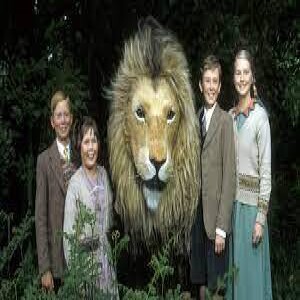


Wednesday Dec 27, 2023
Wednesday Dec 27, 2023
The Lion, the Witch and the Wardrobe is a British children's television drama first broadcast by the BBC in 1988. It was the first series of The Chronicles of Narnia that ran from 1988 to 1990.
Narnia is the home of the great lion Aslan. During his long absence, his arch-enemy, the evil White Witch places Narnia in an eternal winter. However, with the return of Aslan and the arrival of the four Pevensie children, the Narnians are given a hope to end the tyranny of the Witch.
Opening Credits; Introduction (1.22); The Lion The Witch and the Wardrobe 1988 BBC Trailer (2.24); Lights, Camera, Action (3.02); How Many Stars (16.18); End Credits (18.09); Closing Credits (19.02)
Opening Credits– Epidemic Sound – Copyright . All rights reserved
Closing Credits: A Merry Christmas at Grandmother’s by Danny Kaye and The Andrew Sisters. Taken from the Album Christmas Cheer. Copyright 1950 Decca Records.
Original Music copyrighted 2020 Dan Hughes Music and the Literary License Podcast.
All rights reserved. Used by Kind Permission.
All songs available through Amazon Music.
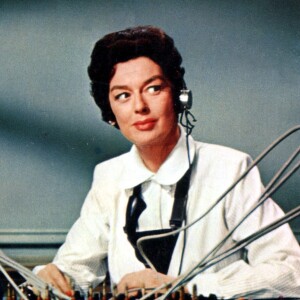


Sunday Dec 03, 2023
Sunday Dec 03, 2023
Auntie Mame: An Irreverent Escapade is a 1955 novel by American author Patrick Dennis chronicling the madcap adventures of a boy, Patrick, growing up as the ward of his Aunt Mame Dennis, the sister of his dead father.
The book is often described as having been inspired by Dennis' real-life eccentric aunt, Marion Tanner, whose life and outlook mirrored those of Mame, but Dennis denied the connection. The novel was a runaway bestseller, setting records on the New York Times bestseller list, with more than 2 million copies in print during its initial publication. It became the basis of a stage play, a film, a stage musical, and a film musical.
In 1958, Dennis wrote a sequel titled Around the World with Auntie Mame.
Auntie Mame is a 1958 American Technirama Technicolor comedy film based on the 1955 novel of the same name by Edward Everett Tanner III (under the pseudonym Patrick Dennis) and its 1956 theatrical adaptation by Jerome Lawrence and Robert Edwin Lee. This film version stars Rosalind Russell and was directed by Morton DaCosta. It is not to be confused with a musical version of the same story that appeared on Broadway in 1966 and was later made into a 1974 film, Mame, starring Lucille Ball as the title character.
Opening Credits; Introduction (2.21); Background History (15.30); Auntie Mame by Patrick Dennis Plot Synopsis (17.01); Book Thoughts (21.56); Let's Rate (39.06); Introducing a Film (41.18); Auntie Mame (1958) Film Trailer (42.25); Lights, Camera, Action (45.31); How Many Stars (1:13.28); End Credits (1.18.01); Closing Credits (1:20.07)
Opening Credits– Jingle Bells by Ella Fitzgerald. Taken from the album Ella’s Swinging Christmas. Copyright 1960 Verve Records. All rights reserved.
Incidental Music: Auntie Mame Original Motion Picture Soundtrack. Music by Ray Heindorf and His Orchestra. Copyright 1958 Master Classics Records.
Closing Credits: We Need A Little Christmas by Angela Lansbury, Frankie Michals, Sab Saminino- Original Broadway Cast. From the album Mame Original Broadway Recording. Copyright 1966 Columbia Master Works Records.
Original Music copyrighted 2020 Dan Hughes Music and the Literary License Podcast.
All rights reserved. Used by Kind Permission.
All songs available through Amazon Music.
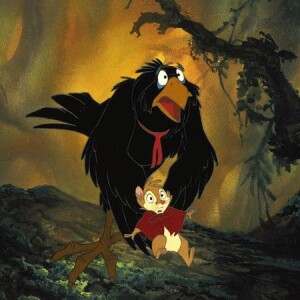


Sunday Nov 05, 2023
Sunday Nov 05, 2023
Mrs. Frisby and the Rats of NIMH is a 1971 children's science fiction/fantasy book by Robert C. O'Brien, with illustrations by Zena Bernstein. The novel was published by the New York City publishing house Atheneum Books.
This book was the winner of numerous awards including the 1972 Newbery Medal. Ten years following its publication, the story was adapted for film as The Secret of NIMH (1982).
The novel centres around a colony of escaped lab rats–the rats of NIMH–who live in a technologically sophisticated and literate society mimicking that of humans. They come to the aid of Mrs. Frisby, a widowed field mouse who seeks to protect her children and home from destruction by a farmer’s plow.
The rats of NIMH were inspired by the research of John B. Calhoun on mouse and rat population dynamics at the National Institute of Mental Health from the 1940s to the 1960s.
After O’Brien’s death in 1973, his daughter Jane Leslie Conly wrote two sequels to Mrs. Frisby and the Rats of NIMH.
The Secret of NIMH is a 1982 American animated fantasy adventure film directed by Don Bluth in his directorial debut and based on Robert C. O'Brien's 1971 children's novel, Mrs. Frisby and the Rats of NIMH. The film features the voices of Elizabeth Hartman, Peter Strauss, Arthur Malet, Dom DeLuise, John Carradine, Derek Jacobi, Hermione Baddeley, and Paul Shenar. It was produced by Bluth's production company Don Bluth Productions in association with Aurora Productions.
The Secret of NIMH was released in the United States on July 2, 1982, by MGM/UA Entertainment Co. under the United Artists label. It was praised by critics for its elegant and painstakingly detailed animation, compelling characters, and deep and mature plot, and won a Saturn Award for Best Animated Film of 1982. Though only a moderate success at the box office, it turned a solid profit through home video and overseas releases. It was followed in 1998 by a direct-to-video sequel, The Secret of NIMH 2: Timmy to the Rescue, which was made without Bluth's involvement or input and met with poor reception. In 2015, a live-action/computer-animated remake was reported to be in the works. A television series adaptation is also in development by the Fox Corporation.
Opening Credits; Introduction (1.21); Background History (4.50); Mrs Frisby and the Rats of NIMH Plot Synopsis (6.15); Book Thoughts (11.37); Let's Rate (42.18); Introducing a Film (44.01); Secret of NIMH (1982) Film Trailer (46.00); Lights, Camera, Action (48.33); How Many Stars (1:33.30); End Credits (1.35.41); Closing Credits (1:37.18)
Opening Credits– Epidemic Sound – Copyright . All rights reserved
Closing Credits: Flying Dreams (from The Secret of NIMH) by Kenny Loggins featuring Olivia Newton-John. Taken from the album More Songs from Pooh’s Corner. Copyright 2000 Sony Records.
Original Music copyrighted 2020 Dan Hughes Music and the Literary License Podcast.
All rights reserved. Used by Kind Permission.
All songs available through Amazon Music.
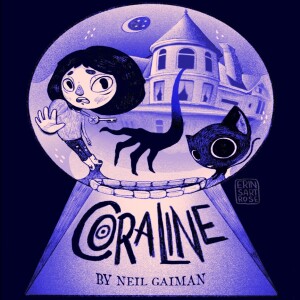


Saturday Oct 14, 2023
Season 7: Episode 328 - ONCE UPON A TIME: Coraline (N Gaiman) (2009)
Saturday Oct 14, 2023
Saturday Oct 14, 2023
Coraline is a dark fantasy horror children's novel by British author Neil Gaiman. Gaiman started writing Coraline in 1990, and it was published in 2002 by Bloomsbury and HarperCollins. It was awarded the 2003 Hugo Award for Best Novella, the 2003 Nebula Award for Best Novel, and the 2002 Bram Stoker Award for Best Work for Young Readers. The Guardian ranked Coraline #82 in its list of 100 Best Books of the 21st Century. It was adapted as a 2009 stop-motion animated film, directed by Henry Selick under the same name.
Coraline is a 2009 American stop-motion animated dark fantasy horror film written and directed by Henry Selick and based on Neil Gaiman's novella of the same name. Produced by Laika as the studio's first feature film, it features the voice talents of Dakota Fanning, Teri Hatcher, Jennifer Saunders, Dawn French, Keith David, John Hodgman, Robert Bailey Jr., and Ian McShane. The film tells the story of its titular character discovering an idealized parallel universe behind a secret door in her new home, unaware that it contains a dark and sinister secret.
Just as Gaiman was finishing his novella in 2002, he met Selick and invited him to make a film adaptation, as Gaiman was a fan of Selick's The Nightmare Before Christmas and James and the Giant Peach. When Selick thought that a direct adaptation would lead to "maybe a 47-minute movie", the screenplay had some expansions, like the introduction of Wybie, who was not present in the original novel. Selick invited Japanese illustrator Tadahiro Uesugi to become the concept artist upon discovering his work when looking for a design away from that of most animation. His biggest influences were on the colour palette, which was muted in reality and more colourful in the Other World, similar to The Wizard of Oz. To capture stereoscopy for the 3D release, the animators shot each frame from two slightly apart camera positions. Production of the stop-motion animation feature took place at a warehouse in Hillsboro, Oregon. Bruno Coulais composed the film's musical score.
The film was theatrically released in the United States on February 6, 2009 by Focus Features after a world premiere at the Portland International Film Festival on February 5, and received critical acclaim. The film grossed $16.85 million during its opening weekend, ranking third at the box office, and by the end of its run had grossed over $124 million worldwide, making it the third highest-grossing stop-motion film of all time after Chicken Run and Wallace & Gromit: The Curse of the Were-Rabbit. The film won Annie Awards for Best Music in an Animated Feature Production, Best Character Design in an Animated Feature Production and Best Production Design in an Animated Feature Production and received nominations for an Academy Award for Best Animated Feature and a Golden Globe Award for Best Animated Feature Film. It has since developed a cult following in the years since its release.
Opening Credits; Introduction (1.20); Background History (9.33); Coraline Plot Synopsis (10.37); Book Thoughts (12.26); Let's Rate (31.40); Introducing a Film (33.14); Coraline Film Trailer (36.35); Lights, Camera, Action (38.55); How Many Stars (1:00.24); End Credits (1:02.03); Closing Credits (1:03.30)
Opening Credits– Epidemic Sound – Copyright . All rights reserved
Closing Credits: Dollhouse by Melanie Martinez. Taken from the album Cry Baby. Copyright 2015 Atlantic Records.
Original Music copyrighted 2020 Dan Hughes Music and the Literary License Podcast.
All rights reserved. Used by Kind Permission.
All songs available through Amazon Music.
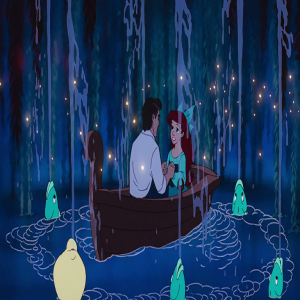


Monday Sep 04, 2023
Monday Sep 04, 2023
The Little Mermaid is a literary fairy tale written by the Danish author Hans Christian Andersen, first published in 1837 as part of a collection of fairy tales for children. The story follows the journey of a young mermaid who is willing to give up her life in the sea as a mermaid to gain a human soul.
The original story has been a subject of multiple analyses by scholars such as Jacob Bøggild and Pernille Heegaard, as well as the folklorist Maria Tatar. These analyses cover various aspects of the story, from interpreting the themes to discussing why Andersen chose to write a tragic story with a happy ending. It has been adapted to various media, including musical theatre, anime, ballet, opera, and film. There is also a statue portraying the mermaid in Copenhagen, Denmark, where the story was written and first published.
The Little Mermaid is a 1989 American animated musical fantasy film produced by Walt Disney Feature Animation and released by Walt Disney Pictures. The 28th Disney animated feature film, it is loosely based on the 1837 Danish fairy tale of the same name by Hans Christian Andersen. The film was written and directed by John Musker and Ron Clements and produced by Musker and Howard Ashman, who also wrote the film's songs with Alan Menken. Menken also composed the film's score. Featuring the voices of Jodi Benson, Christopher Daniel Barnes, Pat Carroll, Samuel E. Wright, Jason Marin, Kenneth Mars, and Buddy Hackett, The Little Mermaid tells the story of a teenage mermaid princess named Ariel, who dreams of becoming human and falls in love with a human prince named Eric, which leads her to make a magic deal with the sea witch, Ursula, to become human and be with him.
The Little Mermaid was released to theaters on November 17, 1989, to critical acclaim, earning praise for the animation, music, and characters. It was also a commercial success, garnering $84 million at the domestic box office during its initial release, and $235 million in total lifetime gross worldwide. Along with the major success of both Disney's 1986 animated film The Great Mouse Detective and the 1988 Disney/Amblin live-action/animated film Who Framed Roger Rabbit, The Little Mermaid is given credit for breathing life back into the art of Disney animated feature films after some films produced by Disney were struggling. It also marked the start of the era known as the Disney Renaissance. The film won two Academy Awards for Best Original Score and Best Original Song ("Under the Sea").
Opening Credits; Introduction (1.19); Background History (14.13); The Little Mermaid Plot Synopsis (15.17); Book Thoughts (21.47); Introducing a Film (58.50); The Little Mermaid (1989) Film Trailer (1:02.28); Lights, Camera, Action (1:03.49); How Many Stars (1:50.42); End Credits (1:52.10); Closing Credits (1:53.48)
Opening Credits– Epidemic Sound – Copyright . All rights reserved
Closing Credits: In Harmony by Jodi Benson. Taken from the Little Mermaid Television Soundtrack. Copyright 1992 Disney Records. Kiss The Girl by Ashley Tidsdale. Taken from The Little Mermaid Soundtrack Copyright 2006 Disney Records.
Original Music copyrighted 2020 Dan Hughes Music and the Literary License Podcast.
All rights reserved. Used by Kind Permission.
All songs available through Amazon Music.
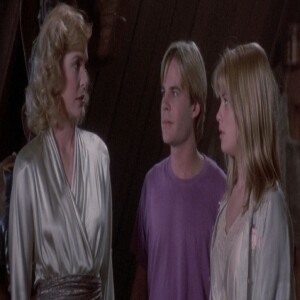


Sunday Aug 06, 2023
Sunday Aug 06, 2023
Book: Flowers in the Attic
By V C Andrews
Film: Flowers in the Attic (1987)
Flowers in the Attic is a 1979 Gothic novel by V. C. Andrews. It is the first book in the Dollanganger Series, and was followed by Petals on the Wind, If There Be Thorns, Seeds of Yesterday, Garden of Shadows, Christopher's Diary: Secrets of Foxworth, Christopher's Diary: Echoes of Dollanganger and Christopher's Diary: Secret Brother. The novel is written in the first-person, from the point of view of Cathy Dollanganger. It was twice adapted into films in 1987 and 2014. The book was extremely popular, selling over forty million copies world-wide.
Flowers in the Attic is a 1987 American psychological horror film directed by Jeffrey Bloom and starring Louise Fletcher, Victoria Tennant, Kristy Swanson, and Jeb Stuart Adams. Its plot follows four children who, after the death of their father, are held captive in the attic of their abusive grandmother's sprawling estate by their cruel and manipulative mother. It is based on V. C. Andrews' 1979 novel of the same name. At one point Wes Craven was scheduled to direct the film, and had completed a screenplay draft. Producers were disturbed by his approach to the incest-laden story, however, and Jeffrey Bloom ended up with writing and directing duties.
Opening Credits; Introduction (2.30); Background History (13.20); Flowers in the Attic Plot Synopsis (14.25); Book Thoughts(20.23); Let's Rate (41.09); Introducing a Film (54.33); Flowers in the Attic (1987) Film Trailer (55.54); Lights, Camera, Action (57.53); How Many Stars (1:19.18); End Credits (1:24.36); Closing Credits (1:26.13)
Opening Credits– Epidemic Sound – copyright 2021. All rights reserved
Closing Credits: Flowers on the Wall by the Statler Brothers. Taken from the album Flowers On The Wall. Copyright 1965 Columbia Records.
Original Music copyrighted 2020 Dan Hughes Music and the Literary License Podcast.
All rights reserved. Used with Kind Permission.
All songs available through Amazon Music.
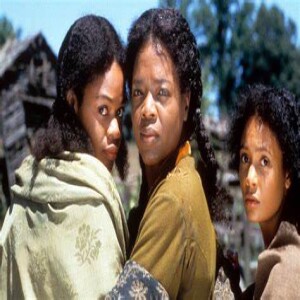


Saturday Jul 15, 2023
Season 6: Episode 312 - AMERICA GOES DARK: Beloved (T. Morrison) (1998)
Saturday Jul 15, 2023
Saturday Jul 15, 2023
Book: Beloved
By Toni Morrison
Film: Beloved (1998)
Beloved is a 1987 novel by the American writer Toni Morrison. Set after the American Civil War, it tells the story of a family of formerly enslaved people whose Cincinnati home is haunted by a malevolent spirit. Beloved is inspired by an event that actually happened: Margaret Garner, an enslaved person in Kentucky, who escaped and fled to the free state of Ohio in 1856. She was subject to capture in accordance with the Fugitive Slave Act of 1850; when U.S. marshals burst into the cabin where Garner and her husband had barricaded themselves, she was attempting to kill her children, and had already killed her two-year-old daughter, to spare them from being returned to slavery. Morrison had come across an account of Garner titled "A Visit to the Slave Mother who Killed Her Child" in an 1856 newspaper article published in the American Baptist, and reproduced in The Black Book, a miscellaneous compilation of black history and culture that Morrison edited in 1974.
Beloved is a 1998 American psychological horror drama film directed by Jonathan Demme and starring Oprah Winfrey, Danny Glover, and Thandiwe Newton. Based on Toni Morrison's 1987 novel of the same name, the plot centers on a former slave after the American Civil War, her haunting by a poltergeist, and the visitation of her reincarnated daughter. Despite being a box office bomb Beloved received an Oscar nomination for Best Costume Design for Colleen Atwood, the film received mostly positive reviews, and both Danny Glover and Kimberly Elise received praise for their performances.
Opening Credits; Introduction (2.30); Background History (21.42); Plot Synopsis (23.37); Book Thoughts(28.10); Let's Rate (56.09); Introducing a Film (58.22); Film Trailer (59.35); Lights, Camera, Action (1:01.35); How Many Stars (1:57.01); End Credits (2:01.20); Closing Credits (2:02.35)
Opening Credits– Epidemic Sound – copyright 2021. All rights reserved
Closing Credits: Something In My House by Dead or Alive. Taken from the album Mad, Bad And Dangerous To Know. Copyright 1986. Epic Records.
Original Music copyrighted 2020 Dan Hughes Music and the Literary License Podcast.
All rights reserved. Used With Kind Permission.
All songs available through Amazon Music.



Sunday Jun 04, 2023
Sunday Jun 04, 2023
Book: The Talented Mr Ripley
By Patricia Highsmith
Film: The Talented Mr Ripley (1999)
The Talented Mr. Ripley is a 1955 psychological thriller novel by Patricia Highsmith. This novel introduced the character of Tom Ripley, who returns in four subsequent novels. It has been adapted numerous times for film, including the 1999 film of the same name.
The Talented Mr. Ripley is a 1999 American psychological thriller film written and directed by Anthony Minghella, and based on Patricia Highsmith's 1955 novel of the same name. It stars Matt Damon as Tom Ripley, with Jude Law, Gwyneth Paltrow, Cate Blanchett and Philip Seymour Hoffman in supporting roles. The novel was previously filmed twice. In 1957, a one-hour version was produced for the TV anthology series Studio One, directed by Franklin J. Schaffner, though no recording survives. In 1960, a full-length film version was released, titled Purple Noon (French: Plein soleil) and directed by René Clément, starring Alain Delon in his first major role. Claude Chabrol's 1968 film Les biches ('The Does') uses many elements of Highsmith's novel but switches the gender of the main characters. The film was a critical and commercial success. It received five Academy Award nominations, including Best Adapted Screenplay and Best Supporting Actor for Law.
Opening Credits; Introduction (2.31); Background History (10.18); Plot Synopsis (10.53); Book Thoughts(15.40); Let's Rate (34.54); Introducing a Film (36.59); Film Trailer (37.48); Lights, Camera, Action (39.56); How Many Stars (1:14.52); End Credits (1:16.27); Closing Credits (1:17.27)
Opening Credits– Epidemic Sound – copyright 2021. All rights reserved
Closing Credits: Tu vuò fà l'americano by Renato Carsone. Copyright 1956 Pathe records.
Original Music copyrighted 2020 Dan Hughes Music and the Literary License Podcast.
All rights reserved.
All songs available through Amazon Music.
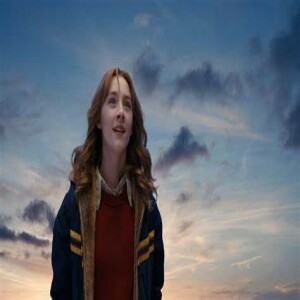


Sunday May 14, 2023
Sunday May 14, 2023
Book: Lovely Bones
By Alice Sebold
Film: Lovely Bones (2009)
The Lovely Bones is a 2002 novel by American writer Alice Sebold. It is the story of a teenage girl who, after being raped and murdered, watches from her personal Heaven as her family and friends struggle to move on with their lives while she comes to terms with her own death. The novel received critical praise and became an instant bestseller. A film adaptation, directed by Peter Jackson, who personally purchased the rights, was released in 2009. The novel was also later adapted as a play of the same name, which premiered in England in 2018.
The Lovely Bones is a 2009 supernatural thriller drama film directed by Peter Jackson from a screenplay he co-wrote with Fran Walsh and Philippa Boyens. It is based on Alice Sebold's 2002 novel of the same name and stars Mark Wahlberg, Rachel Weisz, Susan Sarandon, Stanley Tucci, Michael Imperioli, and Saoirse Ronan. The plot follows a girl who is murdered and watches over her family from "the in-between" and is torn between seeking vengeance on her killer and allowing her family to heal. An international co-production between the United States, the United Kingdom, and New Zealand, the film was produced by Carolynne Cunningham, Walsh, Jackson, and Aimee Peyronnet, with Steven Spielberg, Tessa Ross, Ken Kamins, and James Wilson as executive producers. Principal photography began in October 2007 in New Zealand and Pennsylvania. The film's score was composed by Brian Eno.
Opening Credits; Introduction (2.32); Background History (6.47); Lovely Bones Plot Synopsis (7.46); Book Thoughts (12.10); Let's Rate (33.21); Introducing a Film (36.46); Lovely Bones Film Trailer (38.55); Lights, Camera, Action (41.16); How Many Stars (1:04.25); End Credits (1:06.15); Closing Credits (1:07.40)
Opening Credits– Epidemic Sound – copyright 2021. All rights reserved
Closing Credits: Now You Belong To Heaven by Mari Olsen. Copyright 2008 Mari Olsen Onsøien
Original Music copyrighted 2020 Dan Hughes Music and the Literary License Podcast.
All rights reserved.
All songs available through Amazon Music.
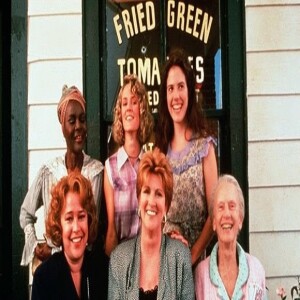


Tuesday Apr 25, 2023
Tuesday Apr 25, 2023
Book: Fried Green Tomatoes at the Whistle
Stop Café
By Fannie Flagg
Film: Fried Green Tomatoes at the Whistle
Stop Café (1991)
Fried Green Tomatoes at the Whistle Stop Cafe is a 1987 novel by American author Fannie Flagg. Set in Alabama, it weaves together the past and the present through the blossoming friendship between Evelyn Couch, a middle-aged housewife, and Ninny Threadgoode, an elderly woman who lives in a nursing home. Every week Evelyn visits Ninny, who recounts stories of her youth in Whistle Stop, Alabama, where her sister-in-law, Idgie, and her friend, Ruth, ran a café. These stories, along with Ninny's friendship, enable Evelyn to begin a new, satisfying life while allowing the people and stories of Ninny's youth to live on. The book explores themes of family, aging, lesbianism, and the dehumanizing effects of racism on both black and white people.
Fried Green Tomatoes is a 1991 American comedy-drama film directed by Jon Avnet and based on Fannie Flagg's 1987 novel Fried Green Tomatoes at the Whistle Stop Cafe. Written by Flagg and Carol Sobieski, and starring Kathy Bates, Jessica Tandy, Mary Stuart Masterson, Mary-Louise Parker and Cicely Tyson, the film tells the story of a housewife who, unhappy with her life, befriends an elderly lady in a nursing home and is enthralled by the tales she tells of people she used to know. The film was released in theaters in the United States on December 27, 1991, garnered positive reviews from critics and was a box office hit, grossing $119.4 million on a $11 million budget. It was nominated for two Oscars at the 64th Academy Awards: Best Supporting Actress (Tandy) and Best Adapted Screenplay.
Opening Credits; Introduction (2.29); Background History (11.59); Plot Synopsis (13.19); Book Thoughts(17.57); Let's Rate (1:06.57); Amazing Design Advertisement (16.47); Introducing a Film (1:17.57); Film Trailer (1:18.47); Lights, Camera, Action (1:21.14); How Many Stars (1:59.03); End Credits (2:09.17); Closing Credits (2:11.19)
Opening Credits– Epidemic Sound – copyright 2021. All rights reserved
Closing Credits: Count On Me by Bruno Mars. Taken from the album Doo-Wops and Hooligans. Copyright 2011 Atlantic/Warner Music.
Original Music copyrighted 2020 Dan Hughes Music and the Literary License Podcast.
All rights reserved. Used with Kind Permission.
All songs available through Amazon Music.
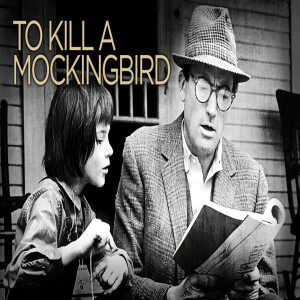


Wednesday Mar 15, 2023
Season 6: Episode 293 - AMERICA GOES DARK: To Kill A Mockingbird (H. Lee/1963)
Wednesday Mar 15, 2023
Wednesday Mar 15, 2023
Book: To Kill A Mockingbird
By Harper Lee
Film: To Kill A Mockingbird (1962)
To Kill a Mockingbird is a novel by the American author Harper Lee. It was published in 1960 and was instantly successful. In the United States, it is widely read in high schools and middle schools. To Kill a Mockingbird has become a classic of modern American literature, winning the Pulitzer Prize. The plot and characters are loosely based on Lee's observations of her family, her neighbors and an event that occurred near her hometown of Monroeville, Alabama, in 1936, when she was ten. Although the novel deals with rape and racial inequality, the book is told with warmth and humour.
The 1962 American drama film directed by Robert Mulligan. The screenplay by Horton Foote is based on Harper Lee's 1960 Pulitzer Prize–winning novel of the same name. The film stars Gregory Peck as Atticus Finch and Mary Badham as Scout. It marked the film debut of Robert Duvall, William Windom and Alice Ghostley. It gained overwhelmingly positive reception from both the critics and the public; a box-office success, it earned more than six times its budget. The film won three Academy Awards, including Best Actor for Peck, and was nominated for eight, including Best Picture. In 1995, the film was selected by the Library of Congress for preservation in the National Film Registry as "culturally, historically, or aesthetically significant".
Opening Credits; Introduction (2.33); Background History (17.50); Plot Synopsis (20.57); Book Thoughts(24.52); Let's Rate (1:33.07); Amazing Design Advertisement (1:31.42); Introducing a Film (1:37.53); Film Trailer (1:39.16); Lights, Camera, Action (1:41.55); How Many Stars (1:32.44); End Credits (2:41.44); Closing Credits (2:43.49)
Opening Credits– Epidemic Sound – copyright 2021. All rights reserved
Closing Credits: Not All Heroes Wear Capes by Owl City – taken from the album Cinematic. Copyright 2018 Sky Harbor Studios
Original Music copyrighted 2020 Dan Hughes Music and the Literary License Podcast.
All rights reserved. Used with Kind Permission.
All songs available through Amazon Music.



Sunday Feb 05, 2023
Sunday Feb 05, 2023
Book: The Color Purple
By Alice Walker
Film: The Color Purple (1985)
The Color Purple is a 1982 epistolary novel by American author Alice Walker which won the 1983 Pulitzer Prize for Fiction and the National Book Award for Fiction. It was later adapted into a film and musical of the same name. The novel has been the frequent target of censors and appears on the American Library Association list of the 100 Most Frequently Challenged Books of 2000–2009 at number seventeenth because of the sometimes explicit content, particularly in terms of violence.
The Color Purple is a 1985 American epic coming-of-age period drama film directed by Steven Spielberg and written by Menno Meyjes, based on the Pulitzer Prize-winning 1982 novel of the same name by Alice Walker. It was Spielberg's eighth film as a director, and marked a turning point in his career, as it was a departure from the summer blockbusters for which he had become known. It was also the first feature film directed by Spielberg for which John Williams did not compose the music, instead featuring a score by Quincy Jones, who also produced. The cast stars Whoopi Goldberg in her breakthrough role, with Danny Glover, Oprah Winfrey, Margaret Avery, Rae Dawn Chong, Willard Pugh, and Adolph Caesar. Filmed in Anson and Union counties in North Carolina, the film tells the story of a young African-American girl named Celie Harris and shows the problems African-American women experienced during the early 20th century, including domestic violence, incest, paedophilia, poverty, racism, and sexism. Celie is transformed as she finds her self-worth through the help of two strong female companions
Opening Credits; Introduction (2:34); Background History (17.09); The Color Purple Plot Synopsis (18.27); Book Thoughts (26.15); Let's Rate (1:27.30); Amazing Design Advertisement (1:27.55); Introducing a Film (1:37.07); The Color Purple Film Trailer (1:33.40); Lights, Camera, Action (1:34.57); How Many Stars (2:26.07); End Credits (2:31.47); Closing Credits (2:34.21)
Opening Credits– Epidemic Sound – copyright 2021. All rights reserved
Closing Credits: The Color Purple by Jennifer Hudson and Cynthia Ervio. Taken from the Broadway Cast Album. The Color Purple. Copyright 2016 TCP 2015 Broadway New Cast Recording.
Original Music copyrighted 2020 Dan Hughes Music and the Literary License Podcast.
All rights reserved. Used by Kind Permission.
All songs available through Amazon Music.



Saturday Jan 14, 2023
Saturday Jan 14, 2023
Book: We Need to Talk About Kevin
By Lionel Shriver
Film: We Need to Talk About Kevin (2011)
We Need to Talk About Kevin is a 2003 novel by Lionel Shriver, published by Serpent's Tail, about a fictional school massacre. It is written from the first person perspective of the teenage killer's mother, Eva Khatchadourian, and documents her attempt to come to terms with her psychopathic son Kevin and the murders he committed, as told in a series of letters from Eva to her husband. The novel, Shriver's seventh, won the 2005 Orange Prize, a UK-based prize for female authors of any country writing in English. In 2011 the novel was adapted into a film.
We Need to Talk About Kevin is a 2011 psychological thriller drama film directed by Lynne Ramsay from a screenplay she co-wrote with Rory Stewart Kinnear, based on the 2003 novel of the same name by Lionel Shriver. A long process of development and financing began in 2005, with filming commencing in April 2010. Tilda Swinton stars as the mother of Kevin, struggling to come to terms with her psychopathic son and the horrors he has committed. The film premiered at the 2011 Cannes Film Festival and was released in the United Kingdom on 21 October 2011.
Opening Credits; Introduction (2.33); Amazing Design Advertisement (24.07); Background History (25.19); Plot Synopsis (26.24); Book Thoughts (32.24); Let's Rate (1:30.21); Introducing a Film (1:33.10); Film Trailer (1:34.34); Lights, Camera, Action (1:36.11); How Many Stars (2:36.00); End Credits (2:49.50); Closing Credits (2:51.34)
Opening Credits– Epidemic Sound – copyright 2021. All rights reserved
Closing Credits: I Don’t Like Mondays by The Boomtown Rats. Taken from the album The Fine Art of Surfacing. Copyright 1979 Ensign/Columbia Records
Original Music copyrighted 2020 Dan Hughes Music and the Literary License Podcast.
All rights reserved. Used with Kind Permission.
All songs available through Amazon Music.



Sunday Dec 04, 2022
Sunday Dec 04, 2022
Book: We Have Always Lived in The Castle
By Shirley Jackson
Film: We Have Always Live in the Castle
(2018)
We Have Always Lived in the Castle is a 1962 mystery novel by American author Shirley Jackson. It was Jackson's final work, and was published with a dedication to Pascal Covici, the publisher, three years before the author's death in 1965. The novel is written in the voice of eighteen-year-old Mary Katherine "Merricat" Blackwood, who lives with her sister and uncle on an estate in Vermont. Six years before the events of the novel, the Blackwood family experienced a tragedy that left the three survivors isolated from their small village. The novel was first published in hardcover in North America by Viking Press, and has since been released in paperback and as an audiobook and e-book.[2] It has been described as Jackson's masterpiece.
We Have Always Lived in the Castle is a 2018 American mystery thriller film directed by Stacie Passon, written by Mark Kruger, and starring Taissa Farmiga, Alexandra Daddario, Crispin Glover, and Sebastian Stan. It was based on the 1962 novel of the same name by Shirley Jackson.
Opening Credits; Introduction (2:31); Amazing Design Advertisement ( 19.14); Background History (20.26); Plot Synopsis (21.26); Book Thoughts (25.32); Let's Rate (1:07.56); Introducing a Film (1:16.06); We Have Always Lived In The Castle Film Trailer (1:17.11); Lights, Camera, Action (1:19.02); How Many Stars (1:59.49); End Credits (2:04.39); Closing Credits (2:06.26)
Opening Credits– Epidemic Sound – copyright 2021. All rights reserved
Closing Credits: I’ll Be Home For Christmas by Elvis Presley and Carrie Underwood. Taken from the album Christmas Duets. Copyright 2008 RCA Victor Records
Original Music copyrighted 2020 Dan Hughes Music and the Literary License Podcast.
All rights reserved. Used with Kind Permission.
All songs available through Amazon Music.



Sunday Nov 06, 2022
Sunday Nov 06, 2022
Book: Gone Girl
By Gillian Flynn
Film: Gone Girl (2014)
Gone Girl by Gillian Flynn was published in June 2012 and become an instant success. The sense of suspense in the novel would come whether Nick Dunne is responsible for the disappearance of his wife Amy. The book would be told in three parts changing the point of view between the different parts.
The film, directed by David Fincher and starring Rosamund Pike and Ben Affleck. Set in Missouri, the story is a postmodern mystery that follows the events surrounding Nick Dunne who becomes the prime suspect in the sudden disappearance of his wife, Amy. The film also stars Neil Patrick Harris and Tyler Perry. It would be the highest grossing film of David Fincher’s career earning $369million at the box office.
Opening Credits; Introduction (2.33); Background History (6.50); Gone Girl Plot Synopsis (7.52); Book Thoughts(14.51); Let's Rate (41.41); Amazing Design Advertisement (42.33); Introducing a Film (43.44); Gone Girl Film Trailer (45.01); Lights, Camera, Action (47.28); How Many Stars (1:24.18); End Credits (1:26.06); Closing Credits (1:27.54)
Opening Credits– Epidemic Sound – copyright 2021. All rights reserved
Closing Credits: Bitch by Meredith Brookes. Taken from the album Blurring the Edges. Copyright 1997 Capitol-EMI Records
Original Music copyrighted 2020 Dan Hughes Music and the Literary License Podcast.
All rights reserved. Used by Kind Permission
All songs available through Amazon Music.
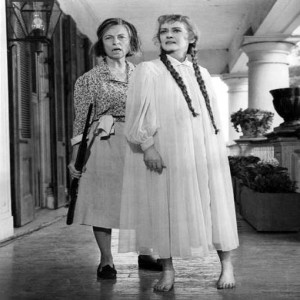


Sunday Oct 09, 2022
Sunday Oct 09, 2022
Book: Whatever Happened to Cousin Charlotte?
By Henry Farrell
Film: Hush, Hush Sweet Charlotte (1964)
Whatever Happened to Cousin Charlotte was a short story that was never published until years later as part of the novel Whatever Happened to Baby Jane novel.
The film was supposed to be the follow-up from Whatever Happened to Baby Jane bring back the two stars but due to the complications and problems between Bette Davis and Joan Crawford, Crawford dropped out after the start of filming to be replaced by Olivia de Haviland. The film follows a middle-aged Southern woman, suspected in the unsolved murder of her lover from decades before, who is plagued by bizarre occurrences after summoning her cousin to help challenge the local government's impending demolition of her home. The film would be nominated for seven Academy Awards and would co star Agnes Moorhead and Mary Astor in her last film role
Opening Credits; Introduction (2.31); Background History (28.49); Whatever Happened To Cousin Charlotte Plot Synopsis (29.44); Book Thoughts(34.10); Let's Rate (49.13); Introducing a Film (57.07); Hush Hush Sweet Charlotte Film Trailer (58.31); Lights, Camera, Action (1:01.22); How Many Stars (1:57.17); End Credits (2:08.03); Closing Credits (2:09.49)
Opening Credits– Epidemic Sound – co2:08/93pyright 2021. All rights reserved
Closing Credits: Deadly Valentine by LVCRFT, Scary Ana Grande, Deja Vudu & Count Tracukla. From the album Deadly Valentine. Copyright 2022 Spooky Never Sleeps
Original Music copyrighted 2020 Dan Hughes Music and the Literary License Podcast.
All rights reserved. Used by Kind Permission.
All songs available through Amazon Music.
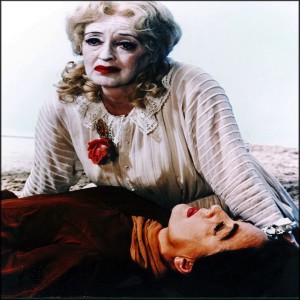


Sunday Sep 04, 2022
Sunday Sep 04, 2022
Book: Whatever Happened to Baby Jane
By Henry Farrell
Film: Whatever Happened to Baby Jane
(1962)
This American horror gothic suspense novel was published in 1960. The novel has since received cult status as would the film from 1962.
The film, starring Bette Davis and Joan Crawford and directed by Robert Aldrich would become a cult classic and the filming would become Hollywood legend with a book and miniseries about the making of the film proving to be a top best seller and highly rated television miniseries. The film follows a former child star terrorising her paraplegic sister in an old Hollywood Mansion.
The film would be nominated five Oscars and receiving one for Best Costume Design. It would also be the tenth and last time Bette Davis would be nominated for an Oscar. The film would receive an “X” rating in the UK in 1962 and it would be start of hag horror films which would become a stable for the next ten years. The film in 2021 was selected for preservation in the United States National Registry by the Library of Congress.
Opening Credits; Introduction (2.33); Background History (24.46); Plot Synopsis (25.31); Book Thoughts(31.32); Let's Rate (1:10.23); Introducing a Film (1:13.12); Film Trailer (1:15.21); Lights, Camera, Action (1:17.14); How Many Stars (2:15.44); End Credits (2:28.20); Closing Credits (2:30.48)
Opening Credits– Epidemic Sound – copyright 2022. All rights reserved
Closing Credits: Whatever Happened to Baby Jane by Debbie Burton and Bette Davis. Taken from the album Whatever Happened to Baby Jane soundtrack. Copyright 1962 – Warner Music
Original Music copyrighted 2020 Dan Hughes Music and the Literary License Podcast.
All rights reserved. Used with Kind Permission.
All songs available through Amazon Music.